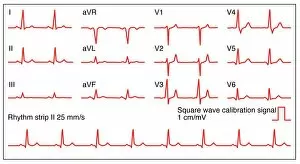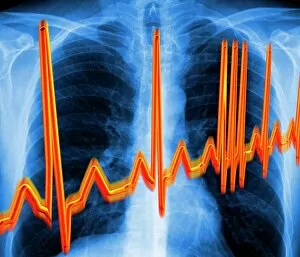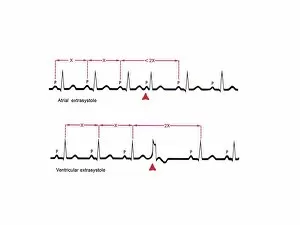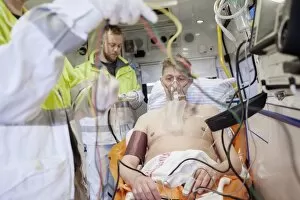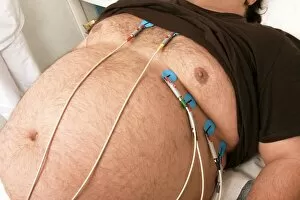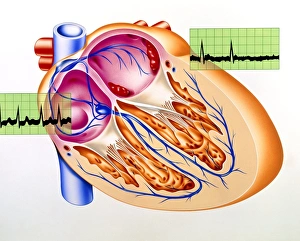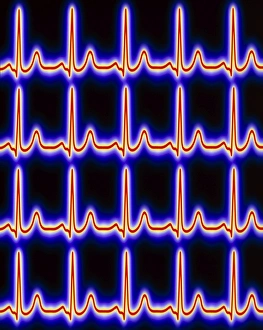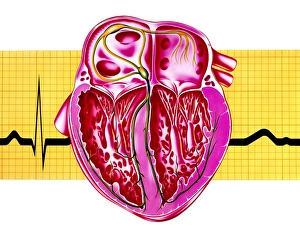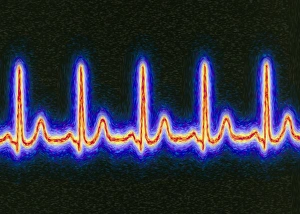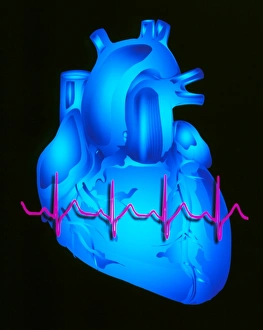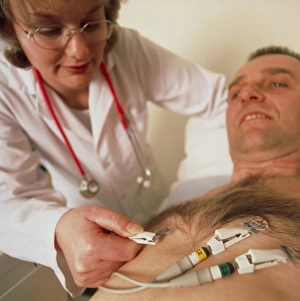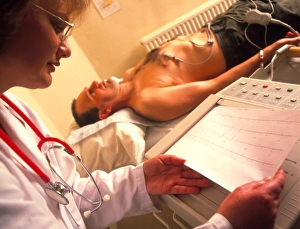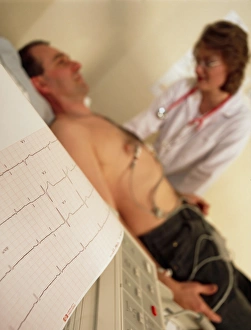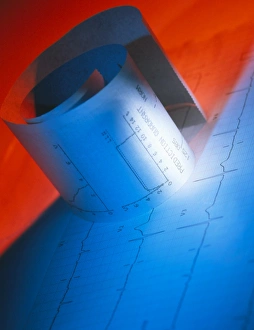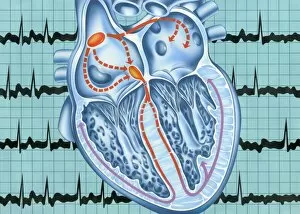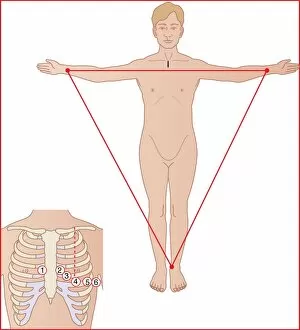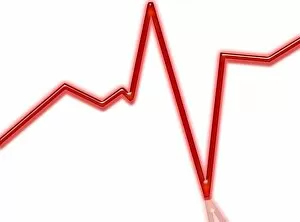Electrocardiography Collection
Electrocardiography, commonly known as ECG, is a vital tool in the field of cardiology
All Professionally Made to Order for Quick Shipping
Electrocardiography, commonly known as ECG, is a vital tool in the field of cardiology. It allows medical professionals to monitor and analyze the electrical activity of the human heart. In a normal heart rate, ECGs display a rhythmic pattern resembling artwork on paper. The intricate lines and peaks represent each heartbeat's electrical signals, providing valuable insights into cardiac health. However, not all hearts beat with perfect regularity. Irregularities in heartbeat can be detected through an ECG trace, indicating potential underlying conditions that require attention. The significance lies in its ability to capture the essence of our most vital organ - the human heart. Through computer-generated artwork or real-time monitoring during medical emergencies like an ambulance ride, ECGs provide visual representations that aid cardiologists in diagnosing and treating patients effectively. Sometimes, abnormal patterns such as extrasystole heartbeats appear on an ECG trace. These irregularities are meticulously depicted through artistic interpretations, allowing healthcare professionals to identify potential issues within the cardiovascular system. Cardiology relies heavily on conceptual images derived from electrocardiography for diagnostic purposes. Captivating visuals like C017 / 7718 showcase how this technology merges science and artistry seamlessly. In emergency situations where time is critical, an ambulance becomes a mobile unit equipped with life-saving tools including portable ECG machines. A cardiac patient being monitored en route (C016 / 7443) demonstrates how electrocardiography plays a crucial role in ensuring prompt intervention when every second counts. Whether it's tracing individual beats (C017 / 7744) or capturing overall cardiac function (C017 / 7743), these detailed recordings offer invaluable information about one's cardiovascular health status. Ultimately, electrocardiography stands at the forefront of modern cardiology practices by providing accurate data for diagnosis and treatment plans. Its impact extends beyond medical settings as it continues to inspire awe and fascination through captivating conceptual images (C017 / 7719).

